
HOW LENORMAND WILL CHANGE YOUR INTERPRETIVE IMAGINATION
I like to call our ability to stretch our reading skills, the interpretive imagination.
I don’t mean by this that we invent messages that aren’t there, but rather that we’re able to grasp deeper insights from the cards so we get genuinely helpful answers to our questions.
The interpretive imagination is unique to divination and it’s brought out really well with Lenormand’s cards. That’s because of its unique features like interpreting its cards in combinations and laying them out in Tableau-style.
The Lenormand practice especially will transform the way you think through your cards.
You’ll open up your interpretation skills in whole new ways and you’ll discover amazing things you can do with the cards.
You can even try using these skills with other decks and tools, though they’re best discovered and learned with Lenormand.
So let me tell you of a few ways how Lenormand will change your interpretive imagination.
STRETCHING BASIC MEANINGS
One thing that sparks our curiosity when we first come into contact with a Lenormand deck is the simplicity of its imagery.
Just about every Lenormand card represents something we commonly find in our everyday world. A house, a key, a heart, to name some examples, are common things that we’re all familiar with.
We can immediately connect with what a Lenormand card is about.
There’s no mystery around the idea that a house represents home and family, that the key has to do with unlocking, or that the heart is about love and feelings.
Understanding Lenormand’s cards is easy and this means that there are next to no barriers to interpreting the cards more deeply.
Unlike the Tarot, where we first need to learn its system of symbols before we can start speaking them, with Lenormand, our near-immediate understanding of the cards means that we can quickly take them to the next level.
Starting with one or two keywords to define a card, we can extrapolate them into a whole lot of other suggestions.
A fun technique for expanding on your card meanings is to use a Mind Map.
A Mind Map is a diagram with one central idea that branches out into many others.
The idea is to let our imagination run free and let one keyword lead to the next and the next.
To take an example, let’s try the House.

The main meaning of the House is “home”. From the idea of home, we can branch out into “family”. And from there we can think of “roots”, “loved ones”, “inner circle”, “friends and family”, and “close ties”.
The House can also mean “indoors”, which can lead to “privacy”, “boundaries”, and others.
And so on.
Try your hand at Mind-Mapping your card keywords.
INTERPRETING ANY CARD FOR ANY CONTEXT
Because it’s possible - and easy - to stretch a Lenormand card’s meaning, it becomes possible to make sense of it in any context. We just have to stretch that meaning into that context.
This is an important way that Lenormand jogs your interpretive imagination.
The key here is to first recognize what the context is. The question that leads us to do a reading is the first way context is given to us.
So we need to be clear about what we’re asking. While this is straightforward most of the time, sometimes some questions are a little convoluted and they’re best being refined so that cards can be read with relevance and focus.
Another way that we’re led to consider a specific context is through the cards themselves.
This figures mainly when we’re doing an open-ended reading. But it is possible to have the cards guide us to a theme that’s different from the one presented by the question.
For example, we might be asking about career success, but then the cards draw our attention to relationships, suggesting that some relationships are important for our career success.
Consider this line.
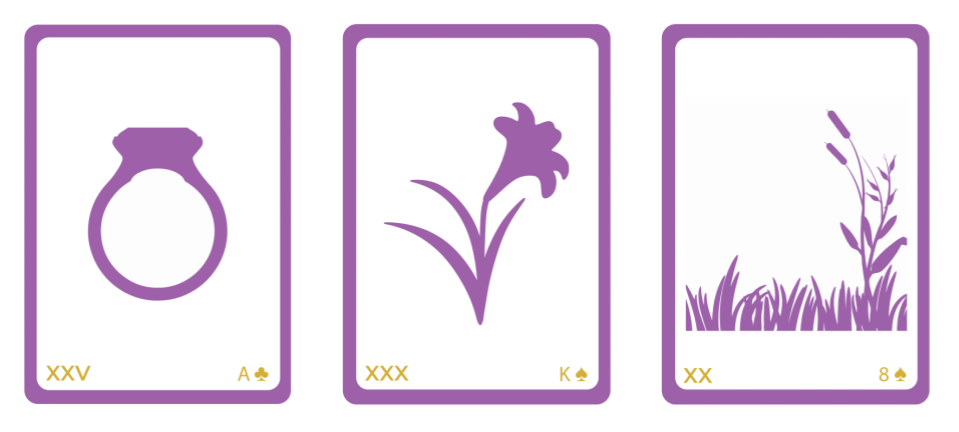
The Lily seems to guide the theme and suggests that our career is in focus.
The Ring and Lily point to professional relationships, and with the Garden, the idea of networking is at hand.
Even if the Ring were in the middle, the combination with the Lily would still suggest professional connections. But, it’s also possible to see things differently.
Suppose we have the Lily, Ring, and Garden instead, the theme can point to a personal relationship instead of our career.
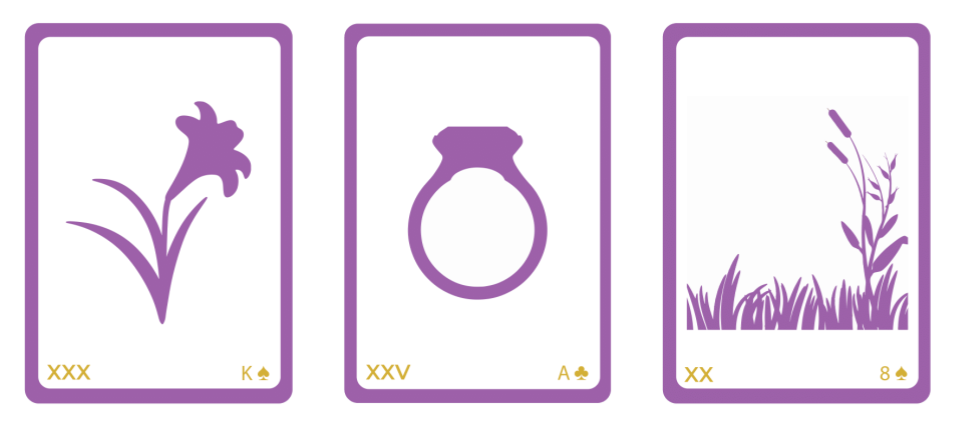
We could be looking at a marriage as the Lily and Ring is a commitment for the long term, and the Ring and Garden can mean a wedding. And even if there isn’t an actual wedding celebration, the idea of a marriage or a commitment on that level is still suggested.
CARD COMBINING FOR INFINITE POSSIBILITIES
Without question, one of the most amazing features of Lenormand is the card combination technique.
There are only 36 cards in the Lenormand deck, but this produces 630 card pairs, and 7,140 triplets!
Lenormand is an amazing system because it’s so practical: Keep the deck small and get infinite meanings from combining the cards.
And you’re not only combining them, but you’re also making sense of that combination meaning for a specific context.
Card combining can be done in different ways, but the key is to focus on what the cards are telling us in the context of the question or theme.
The simplest way to get started with card combinations, is to be comfortable with your card keywords.
From there, just combine the keywords together!
Here’s an example.

The House is about home and family, and the Dog represents a friend. Clearly, this pair suggests a family friend. It can also mean having friends over, or going to a friend's place.
In the context of work, the House usually represents our team or those we work with most closely, and the Dog suggests colleagues. So this is pretty straightforward too.
To take a second example, consider the Sun and Mountain.

The Sun is an all-around success card and the Mountain is about blockages but also possibly a location abroad.
Of course, the cards can suggest overcoming obstacles, but we can also stretch the Sun’s meaning to mean the summer, and so the pair can then suggest a summer vacation.
You can take your interpretive imagination to the next level by building up to triplets, but this doesn’t mean it has to get complicated.
Starting with a card pair, summarize it into a keyword. Then think of a relevant keyword for the third pair, and combine the two together.
To build on the previous examples, consider this triplet.
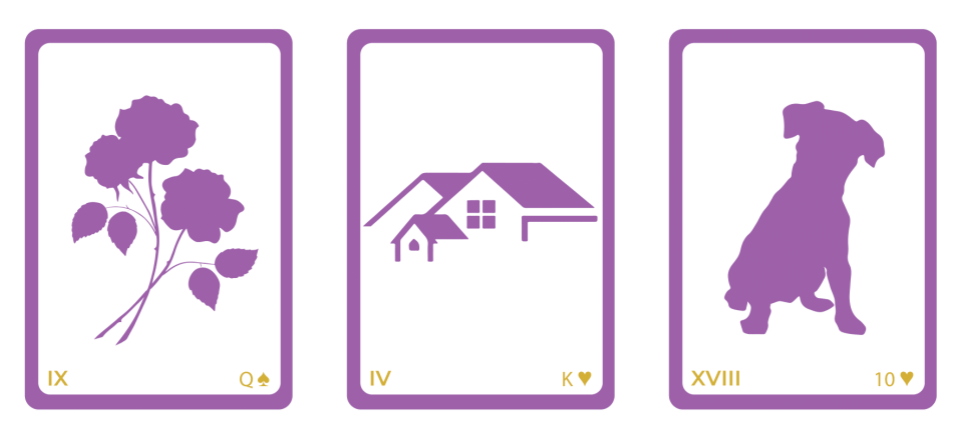
The Flowers being a card of celebration, the line can simply mean celebrating with a friend. This can be something like a birthday or any other occasion.

The Flowers being associated with spring suggests renewal after winter. That’s why it’s the card of renewals and returns. So this triplet can mean returning from a vacation.
STORYTELLING
Pairs and triplets build into stories. With practice, it becomes easy to just string the cards into longer sentences.
That’s why the most interesting Lenormand layouts are large, like the Grand Tableau.
We can weave an extended story and get lots of juicy details from combining the cards in different ways.
To explain this a little, let’s compare with the Tarot.
In a horseshoe layout, which is a popular Tarot spread, cards tell of the past, present, and future, advice, outcome, etc.
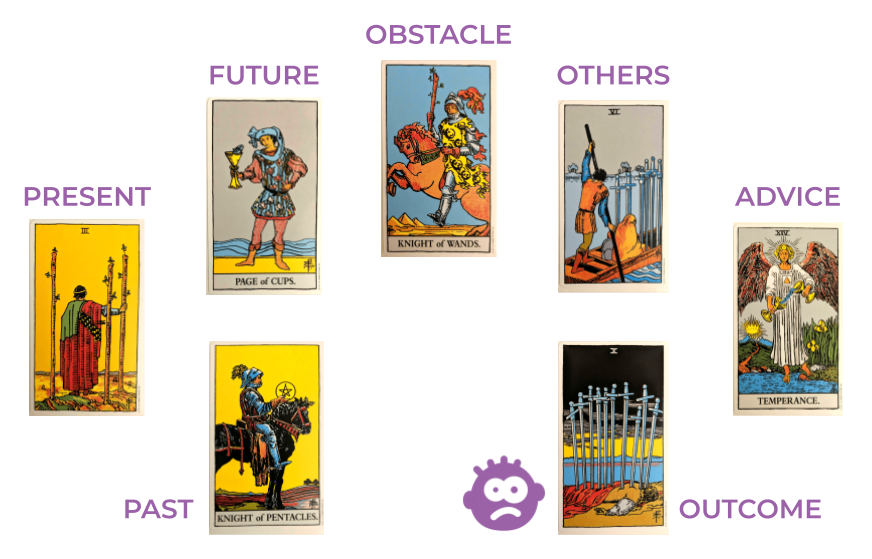
Cards that figure in these positions tell only about these positions. Though they all contribute to the overall feel of the spread, they’re not expressly combined in different ways to give more details about the issue.
This is very different from Lenormand’s Tableau-style layouts.
In Tableau-style layouts, cards are laid out in a square or rectangle, and can be read over and over as part of different rows, columns, and diagonals. We can even combine non-adjacent cards in certain ways - what I call “structures”.
There are no card positions like there are in Tarot layouts. Instead, whole lines and structures can be assigned areas like past, present, future, and others. But this is optional and doesn’t detract from reading the cards again as part of other lines.
Tableau-style interpretation techniques are totally unique to Lenormand and it stretches our interpretation skills to a whole new level.
STICKING WITH REALITY
Though Lenormand’s techniques push our interpretation skills to a whole new level, this doesn’t mean that its insights are not anchored in reality.
Quite amazingly, Lenormand is seen by most who understand it as one of the most practical tools in divination.
It’s all too common to hear that Lenormand is “in your face” and that it doesn’t mince words.
That’s probably because its symbols are from our everyday world and they give us practical insights into our real-life experiences.
Again, this is different from the Tarot, which has plenty of esoteric symbols that are actually connected with esoteric experiences in many several systems of high magic. But these symbols are often watered down to make sense for our everyday experience.
This is why Lenormand is often the go-to for practical, real-life questions.
So while Lenormand has unique features and techniques that stretch our interpretive imagination and skills in ways we haven’t experienced before, it keeps us grounded in reality.
Amazing techniques mixed with practical insights is what made me stick with Lenormand and pretty much forget everything else.
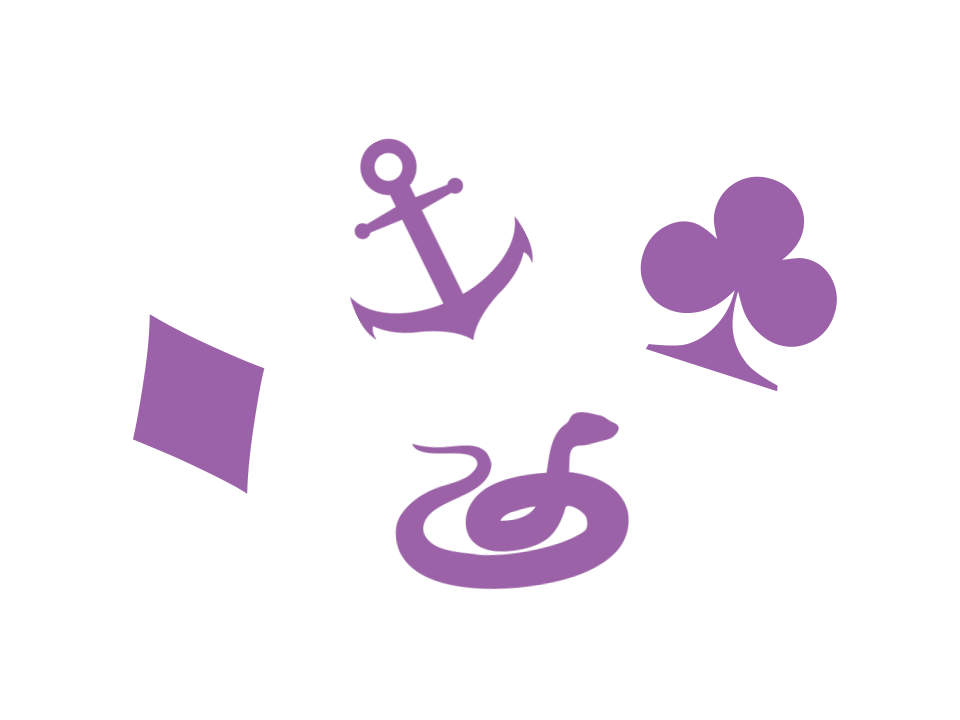
Want To Become A Lenormand Reader?
Lenormand Reader’s Certification Program is the only one of its kind, in size and in depth, to help you master the amazing Lenormand deck. This Program is filled with knowledge and practice accumulated through 20+ years of study and practice. It’s organized into a real body of knowledge and delivered with best in class, online, on-demand video. Join the waitlist so you secure your spot when registration opens.
